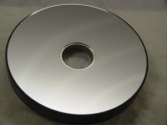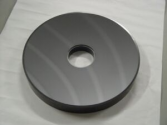A leaked transcript of a recent interview with CITIC securities equity research MD.
Lots of information (has now been deleted unfortunately), but some takeaways:
1. Big stimulus expected in Q2 2023.
2. MIIT is now in charge of China's semiconductor projects instead of MOST
3. A high-level working group on ICT industry was founded in April and is headed by Vice Premier and MIIT senior officials - selection of expert team and enterprises began in Q4 2022
4. Big Fund will not be abolished but will prioritize technological breakthroughs over market returns
5. Projects will be enterprise-focused and led by enterprises instead of academia
6. 20% of SMIC's equipment is now domestic and is being used in production; YMTC's domestic equipment share is 30%
7. YMTC does not need a high-end lithography machine. Company is expected to build a de-Americanized, domestic equipment line in 2024 with a 1000-wafer production (per month?) capacity for testing purposes
8. Shenyang Fortune and Kunshan Kinglai, apparently, are semiconductor parts suppliers to Lam, AMAT, and TEL (50% of their revenue comes from US clients)
9. Huawei is in charge of lithography machine development and 28nm machine will take 2-3 years to develop
10. No need to worry about semiconductor materials and gases as there are many domestic alternatives
11. AI data centers are all required to use Chinese chips; Domestic GPU makes up 3-5% for companies like Baidu and Alibaba
12. Compatibility issues with LoongArch is being resolved - domestic companies developing compatible software and foreign software can be accessed by emulator
13. All levels of government and SOEs will be required to use domestic equipment and CPU in the next few years so huge boost for domestic companies
14. MOF plans to establish a RMB 500 billion fund dedicated to equipment and materials but recipients will be classified for obvious reasons.
15. New strategy will focus on M&A and integration to create state champions
16. Chinese equipment companies allow fabs to trial-run equipment for free vs. Overseas equipment companies that require payment upfront
Take it with a grain of salt but more exciting news is coming for sure...
I'm not sure how 9. works out given SMEE and SSA800 is a thing...



